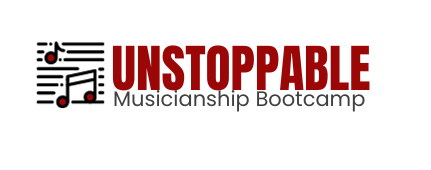Part 10: Solfege Teaching Guide
Advanced Students
As part of the Solfege 2.0 project at French School, not only do we ask questions to see if students grasp basic concepts related to time signatures, note pitches and durations, we also ask questions to see if they understand what the right questions are to ask, and why. The goal is for students to develop deep knowledge by learning how to deconstruct new music on their own, as well as mentor other students.
Coaching Leaders
Teach the class to ask the right questions.
When looking at a new assignment, ask the class: “what is the first question that I ask?”. The response from the more advanced students will be: “what is the time signature?” This sets the stage immediately for beginner students to start thinking at a meta level.
Also ask questions like: what is the first note, what type of note/rest is this (duration like half note).
- What are the sharps and flats?
- Given these two sharps, what key is this in?
- Is this major or minor? Etc.
Ask them what other questions should we ask?
Enlist advanced students as teaching assistants.
At French School, advanced students play the role of teaching assistant by asking 2 or 3 questions for a new assignment, and determining whether the beginner group gives correct answers. If a beginner is one note off, coach the advanced student to say “close!”
Coach the advanced students to monitor beginners and ensure they keep their eyes on the music and follow along.
During dictation (simple exercise first for the beginners), have one advanced student up at the chalkboard, writing clefs, time signatures, key signatures, and notes if necessary. Have other advanced students monitor the progress of the beginner students, validate their work, and indicate when they have finished so the instructor can continue.
Forcing students to think at a meta level will also expedite learning an instrument. They will begin to think automatically the way all great musicians think, so that their teachers can focus on technique and musicality. Given that modern musicians rarely have enough time to practice, the efficiencies laid out in my dad’s piano practice guide and this solfege guide are not a luxury, but a necessity in order to be a musician. We attended a Game of Thrones live concert experience at Madison Square Garden, and learned from the composer that he has two weeks to put together the music for each episode. And that is a luxury, normally he has one week.
Pair beginning and advanced students.
Drill by having an advanced student and beginner student go to the blackboard. Have the advanced student say a solfege note, and low or high if necessary, and the beginner student has to indicate how to write that note. The advanced student has to say whether the answer is correct or not.
Teach students how to divide and conquer.
What we do in solfege is a metaphor for life itself. Big problems are often just a number of little problems masquerading as big problems. A big problem often isn’t a tiger that is going to eat you, it is really composed of a bunch of kittens that need your help.
What is the big problem that we are trying to solve?
“Can you pick up a piece of music you've never seen or heard before and figure it out?”
What are the little problems that help us to solve this big problem?
- What is the time signature?
- What is the top number and what does it mean?
- What is the bottom number and what does it mean?
- Is this treble or bass clef?
- How many sharps or flats are there?
- What key is this in?
- Is this major or minor?
- Do we start on the first beat? If not, what beat?
Teach students to think cross-functionally.
We often treat subjects in school in a silo’ed manner, where we think we are learning music, math, science, and English. These subjects are often intertwined. In solfege, we are using our math skills.
For example: If we have a time signature of 4/4, and turn each quarter note into a triplet, how many triplets will be in this measure?
4 x 3 = 12: 1 and and 2 and and 3 and and 4 and and
or
1 2 3 4 5 6 7 8 9 10 11 12
Advanced Exercises
Chose a random easy exercise from Dannhäuser book 1 which is likely in do major. Have students transpose and solfege this in another key on the fly. First ask them to determine how many sharps / flats the key would have, and what they are. Yes, this means the accompanist has to transpose on the fly as well… This is great practice for improvisation drills as well. Also, start with keys that only have one sharp or flat. Then two, etc.
Chose a random exercise, and have the accompanist play the exercise with the melody. Have students solfegiate an improvised secondary voice. Initially, solfegiate in thirds, either above or below the melody line. Once they reach a level of proficiency, have them improvise a secondary voice without singing the same note as the melody.
Ear training: prior to repeating the notes played by the teacher, have students call out the solfege notes that were played before playing them on the second piano. This will reinforce solfege mental play.
